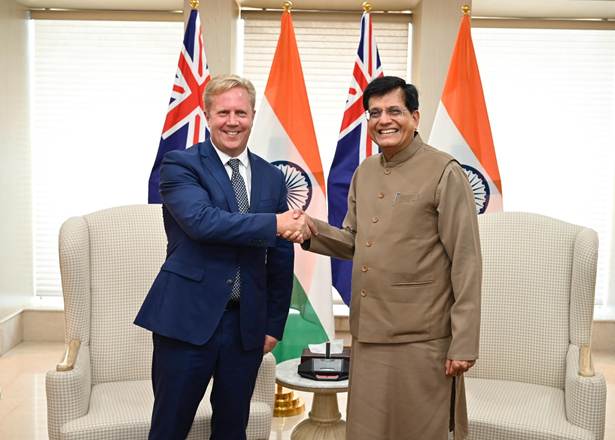n a major trade development, India and New Zealand have resumed Free Trade Agreement (FTA) negotiations after a decade-long hiatus. The announcement followed a meeting between New Zealand’s Trade Minister Todd McClay and India’s Commerce Minister Piyush Goyal in New Delhi. The talks aim to strengthen bilateral trade by reducing tariffs, enhancing market access, and addressing trade barriers.
Why the FTA Matters Now
The relaunch of the FTA talks aligns with India’s broader trade strategy. India is simultaneously negotiating trade agreements with the US, the European Union, and Australia, positioning itself as a key player in global trade partnerships. For New Zealand, the FTA offers a chance to expand its market reach in one of the fastest-growing economies in the world.
Key Sectors Under Discussion
- Agriculture and Dairy: New Zealand, known for its robust dairy industry, seeks to expand its exports of milk powder, cheese, and butter to India by reducing existing tariffs. However, India’s dairy sector is concerned about the potential impact on local farmers.
- Technology and Services: India is pushing for increased access for its IT, pharmaceutical, and service sectors in the New Zealand market.
- Tariff and Non-Tariff Barriers: Both sides aim to reduce tariffs and streamline customs procedures to promote smoother trade flows.
Potential Benefits of the FTA
- Increased Bilateral Trade: The FTA could significantly enhance trade volumes, benefiting key industries such as agriculture, technology, and services.
- Market Diversification: New Zealand exporters could gain a stronger foothold in the Indian market, while Indian firms could benefit from increased access to New Zealand consumers.
- Lower Consumer Prices: Reduced tariffs could lead to more affordable products for consumers in both countries.
- Job Creation: The FTA could promote job growth by boosting trade-related industries.
Challenges Ahead
Despite the optimism, several hurdles remain:
- Protectionism in Agriculture: India’s dairy industry fears being undercut by New Zealand’s cost-competitive products.
- Regulatory Differences: Differences in standards and compliance requirements could slow down the agreement’s finalization.
- Tariff Disputes: Reaching a consensus on tariff reductions will be a key sticking point.
Strategic and Geopolitical Impact
The FTA revival comes amid growing US pressure on India to open its agricultural and dairy sectors. A successful agreement with New Zealand could strengthen India’s trade credentials and set a precedent for its ongoing negotiations with major global economies. Additionally, the deal could enhance India’s influence in the Indo-Pacific trade network.
The resumption of FTA talks between India and New Zealand marks a significant step toward boosting bilateral trade relations. While the deal promises substantial economic benefits, addressing sensitive issues like agricultural competition and regulatory alignment will be critical. If successful, the FTA could unlock new trade opportunities and strengthen economic ties between the two nations.


